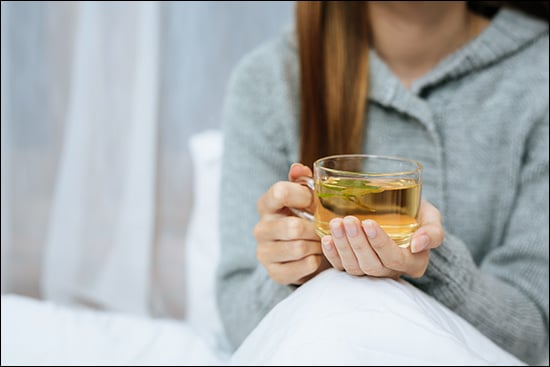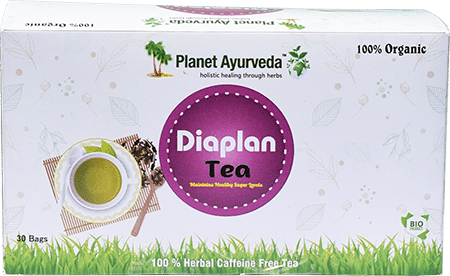Diaplan Tea – Herbal Tea to Lower Blood Sugar Level Naturally
“A tea can be a magical key to the vault where your brain is kept or where there is tea there is hope”. These are some really heart and mind touching things we hear about tea and each of us has a very specific outline in our minds about the type of tea we want. But there’s a hard thought we have to give about whether our type of tea is healthy or not. According to a quick guess, most of us already know whether our tea is healthy or not. Especially when we are suffering from something like any disease, condition or disorder at that time we think of such things which are called healthy teas. These healthy teas are nothing but a herbal infusion of certain herbs which can be chosen according to the condition. There is a quote about herbal teas that “Our ancestors never had teas, they had kadas which are now given a very fancy name: The herbal teas.” So, this article is about one such herbal tea and it is named as Diaplan Tea.

Introduction
Diaplan tea is effective for controlling the recurrent elevated levels of blood glucose. This is a herbal tea which is prepared using an effective group of herbs and thus gives its effect in lowering the blood sugar levels. This tea or herbal tea is having ingredients like Jamun (Syzygium jambolanum), Fenugreek (Trigonella foenum graecum), Cinnamon (Cinnamomum zeylanicum), Cardamon (Elettaria cardamomum), Tulsi (Ocimum sanctum) and Green Tea (Camelia sinensis). These all ingredients have a very great effect on blood sugar as well as on the digestive system. The tea basically has a supporting effect on the whole body and it’s systems.
Now, as we know about tea and it’s major benefits, that is lowering blood glucose and enhancing digestion, we will discuss the impact of its ingredients on the human body individually.
Ingredients Description
1. Jamun (Eugenia jambolana)
Jamun is a fruit which is known to everyone and maximum people love it when it’s available seasonally. But yes, for a surprise the jamun is having very great results in subsiding the high levels of glucose. The jamun is a fruit that belongs to lavana kula. In English it is known as jackfruit. The jamun is kaphashamak due to its drying property and astringent taste. On the other hand it is also pitta shamak due to its Sheeta potency and astringent taste. So, it is clear that this is effective in kapha and pitta dosha related disorders. The dhatu in which it has its effect is meda and majja. The seeds of jamun are used in the preparation of diaplan tea.
2. Fenugreek (Trigonella foenum graecum)
Fenugreek reminds me of a very famous quote that states Fenugreek, Tuesday’s spice, when the air is green like mosses after rain. Daily intake of fenugreek not only reduces risk of developing high blood sugar levels but also lowers the blood sugar levels. Yes, we Indians use it frequently in our cooking and it’s been a spice of Indian cuisine for a long time. Fenugreek is called methi in hindi and is hot in potency and has a pungent taste which makes it a perfect vata and kapha shamak or vata or kapha pacifier agent. Due to these properties it works on blood sugar and also aids digestion. On digestion it is having a carminative and appetising effect.
3. Cinnamon (Cinnamomum zeylanicum)
Cinnamon is called dalchini in hindi and twak in sanskrit. It is a very common ingredient found in Indian kitchens as well as in western kitchens. This herb has a hot potency which means it is an excellent kapha and vata pacifier. In high blood sugar levels, there is a constant involvement of kapha dosha which is very well tackled by cinnamon. Moreover, it has light and drying properties which make it easy to digest and helps in eliminating amadosha or endotoxins from the body. The cholesterol buildup in people having high blood sugar levels is also very nicely resolved by this commonly found herb.
4. Cardamon (Elettaria cardamomum)
Ela or choti elachi is a pungent, aromatic, herbaceous and perennial plant which belongs to the ginger family. Cardamom is known as the “king of spices”. It has a strong, unique taste, soothing fragrance and extensively soothing aroma. It possesses laghu and sheeta guna which means it is cold in nature and is easy to digest. The potency of the ela is cold and its metabolic property is pungent. Ela is known for its kapha and pitta dosha pacification properties. The fruit is used in the preparation of diaplan tea. The ela or cardamom is really beneficial in digestion as it is also having a carminative effect. It typically has cholesterol lowering properties.
5. Tulsi (Ocimum sanctum)
The herb belongs to the surasadi gana and labiatae family. Tulsi mainly acts on the respiratory system but typically has its impact on kapha dosha. The tulsi has light and drying properties along with hot potency. The leaves of this planet are used in the preparation of tea. Tulsi also acts as a preservative and is a vata shamak too. It has an impact on fat metabolism as it enhances the working of fat metabolism. Tulsi enhances the circulation and relieves edema also. The herb is very well used in many forms like in the form of infusions as it is having a curreting effect on obesity.
6. Green Tea (Camelia sinensis)
Green tea is the second most consumed beverage in the world and when it is combined with the potent ingredients like mentioned above then this simple green tea can do miracles. This is the form of tea which acts as an antioxidant and is known to stimulate the nervous system as well. Green tea contains catechins. Due to the presence of these catechins, green tea is termed as a potent antioxidant. It helps in preventing cell damage by reducing the formation of free radicals in the body.
So, presenting the best blend of potent and effective ingredients just in case you have a high level of Sugar or want to prevent high levels of sugar with Diaplan Tea.
How To Use
One tea bag in 80-100ml of warm water. Let the ingredients infuse and your tea is ready. You can use it once or twice a day.




